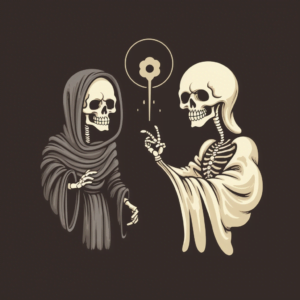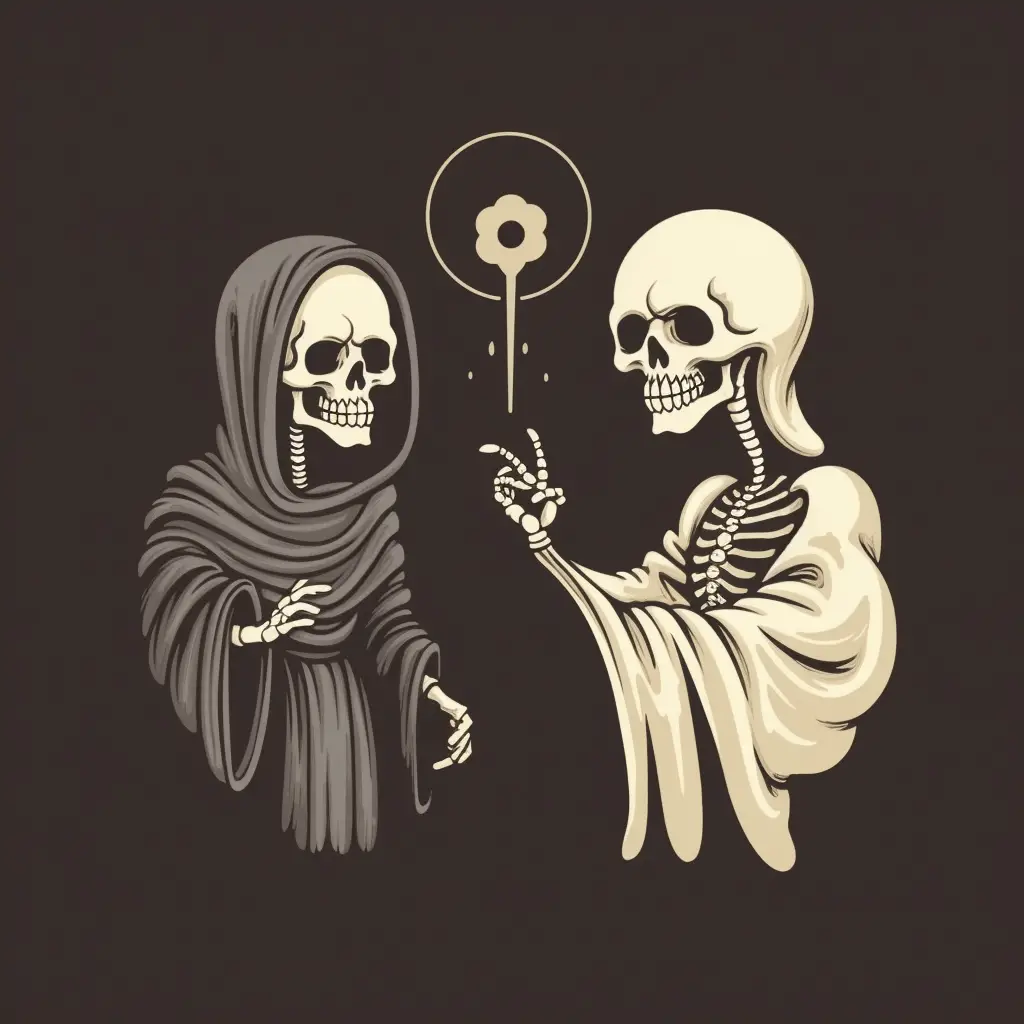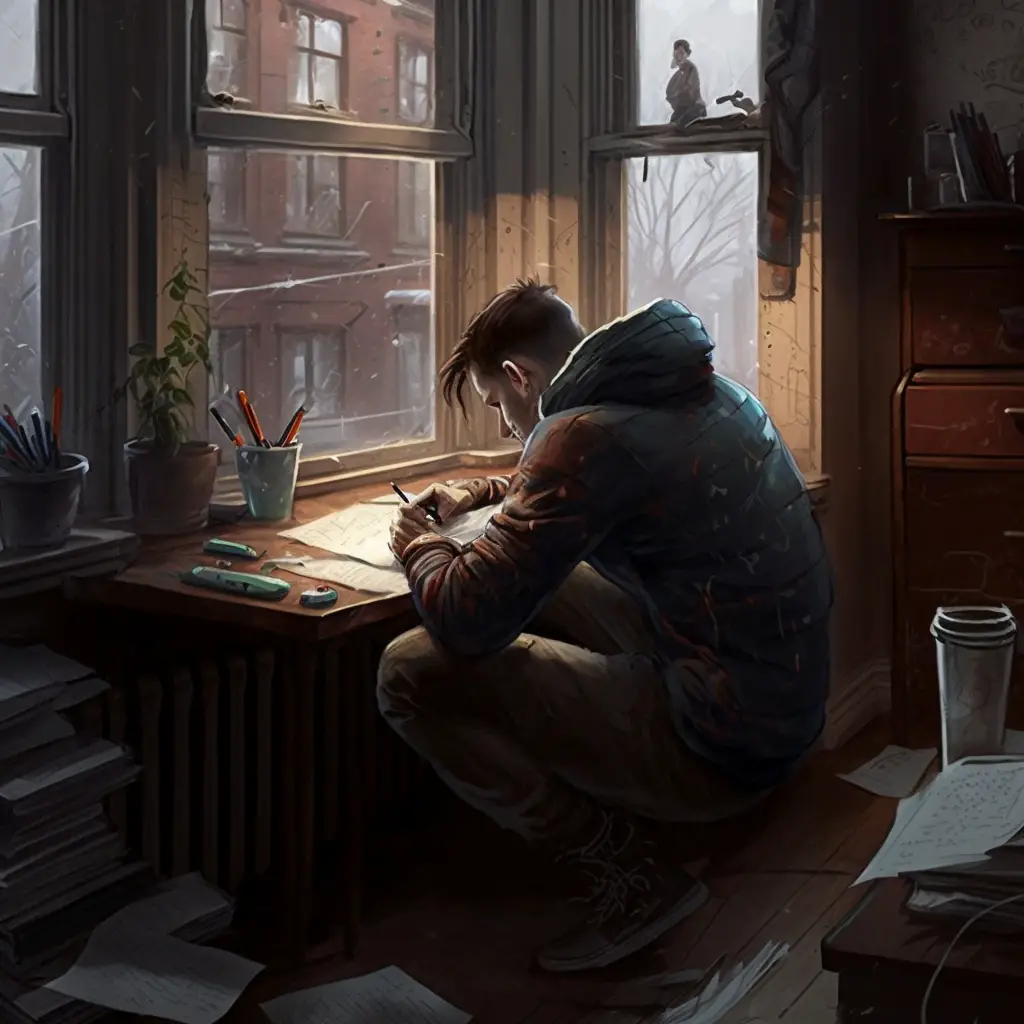
A juxtaposition is when two ideas, characters, plot points, or other elements of a story are placed side–by–side for comparison (or to create an interesting contrast). It‘s like the literary equivalent of putting two photos side–by–side and saying “Hey, check out this cool comparison!”
Sometimes it‘s funny, sometimes it‘s ironic, and sometimes it‘s just plain clever. Let’s explore more about juxtapositions, why they’re useful, and how you can create your own to spice up your writing.
Let’s jump in!
Juxtaposition in Writing
Juxtaposition isn’t just a fancy word that makes one sound like a literary genius at dinner parties. It’s actually an important writing technique and literary device that helps authors create more engaging stories. Imagine talking about a hamster playing basketball with an elephant in order to contrast a local kid playing against a professional NBA athlete. The importance lies in the extreme differences to truly make an effective juxtaposition. It’s all about placing contrasting elements together to make a point or create an effect.
Why Juxtaposition Matters
Why bother with juxtapositions in writing? Well, they’re the secret sauce that adds a certain je ne sais quoi to any story.
Juxtapositions can be used to:
- Highlight differences: By placing two contrasting elements side-by-side, the differences between them become more apparent. It’s like comparing a tiny ant to a giant blue whale or a cup of water to a glass of sand – the differences are obvious and striking, on purpose.
- Create tension: Juxtapositions can help build tension in a story by placing opposing forces or ideas close together. Imagine a peaceful village suddenly invaded by a raging army of zombies. The more opposite each force or element is in the story, the better the effect it can have.
- Evoke emotion: Juxtapositions can also evoke powerful emotions in readers by showing the stark contrast between good and evil, love and hate, or beauty and ugliness. Think of a beautiful rose growing in the middle of a garbage dump – it’s a poignant image, right?
- A turn of phrase: Think of some beautifully concise phrases from your favorite books or movies. A lot of them might’ve been using juxtapositions to elicit a starker visualization. Lines like “deafening silence” or “you can’t taste the sweet without the bitter” or “All’s fair in love and war.” Some of these can be classified as oxymorons, which are a type of juxtaposition.
- Add humor: Sometimes, juxtapositions can be downright hilarious. Especially when they involve an element of absurdity. Picture a ninja trying to sneak around in a room full of squeaky dog toys or the classic elephant inside a fine China shop.

Types of Juxtapositions
Juxtaposition can come in many forms and flavors, like a literary smorgasbord. Here are some of the most popular types:
- Character Juxtaposition: When two characters with contrasting personalities, appearances, or beliefs are placed side-by-side. Sherlock Holmes and Dr. Watson, anyone? This is a strong point in developing character arcs over longer courses of writing.
- Setting Juxtaposition: When two contrasting settings are placed close together in a story, like a bustling city and a tranquil countryside or a patch of garbage on an otherwise beautiful beach.
- Plot Juxtaposition: When two storylines with contrasting themes or events are placed side-by-side, creating an interesting contrast. Think of a romantic comedy with a subplot about saving the environment or a horror movie with an ongoing love triangle.
- Thematic Juxtaposition: When two opposing themes or ideas are explored in a story, such as the struggle between good and evil, or the tension between tradition and progress.
How to Craft Juxtapositions: A Recipe for Success
Ready to whip up some literary magic? Here’s a simple recipe for creating effective juxtapositions:
- Identify the elements: Decide which elements of the story will be juxtaposed. Will it be the characters, the different settings, plot points, or themes? It doesn’t have to be just one or the other, but know that each element can provide a different effect on your readers’ imagination.
- Find the contrast: Determine the contrasting aspects of each element. What makes them different or interesting when placed side-by-side? This is where you think of the opposite effects, do you want to show good vs evil, clean vs dirty, love vs hate? These types of things.
- Blend them together: Weave the contrasting elements into the story in a way that highlights their differences and creates the desired effect, whether it’s tension, humor, or emotion. Essentially, pick the element and apply the contrast, and make sure it’s consistent throughout the story.
Juxtaposition Examples: A Gallery of Greatness
Time to dive into some fantastic examples of juxtaposition in literature, film, and television:
- Character Juxtaposition: In the Harry Potter series, the contrast between the humble Harry and the arrogant Draco Malfoy creates tension and highlights the importance of staying true to oneself.
- Setting Juxtaposition: In The Great Gatsby, F. Scott Fitzgerald juxtaposes the opulent mansions of West Egg with the poverty-stricken Valley of Ashes, emphasizing the vast wealth gap during the Roaring Twenties.
- Plot Juxtaposition: In the film Slumdog Millionaire, the harsh reality of life in the slums is juxtaposed with the protagonist’s journey to win the popular game show “Who Wants to Be a Millionaire?”. This contrast creates a powerful commentary on poverty, luck, and destiny.
- Thematic Juxtaposition: In George Orwell’s Animal Farm, the opposing themes of equality and tyranny are explored through the story of animals revolting against their human oppressors, only to fall victim to their own corrupt leaders.
Creating Juxtapositions in Your Own Writing
Inspired to try juxtaposition in your own writing? Here’s a handy checklist to get started:
- Choose the right elements: Pick elements in your story that will create a powerful contrast when juxtaposed. Remember, it’s all about highlighting differences!
- Consider the desired effect: What impact do you want the juxtaposition to have on the reader? Should it be funny, emotional, or thought-provoking? Choose elements that will help create this effect.
- Integrate smoothly: Seamlessly integrate the juxtaposed elements into your story. Make sure they don’t feel forced or out of place.
- Don’t overdo it: Use juxtaposition sparingly to ensure it remains effective. Too many juxtapositions can make a story feel disjointed or confusing.
Wrapping It Up: The Power of Juxtaposition
Juxtaposition is a powerful writing tool that adds depth, complexity, and engagement to any story. By placing contrasting elements side-by-side, authors can create memorable moments that provoke emotion, inspire thought, or simply make readers laugh. So go forth, and start juxtaposing like a literary pro!
And remember, as a wise person once said, “In writing, as in life, it’s all about the contrasts.” Or maybe that was a fortune cookie. Either way, happy juxtaposing!
If you’re thirsty for more writing knowledge, head over here to learn all 74 literary devices.





